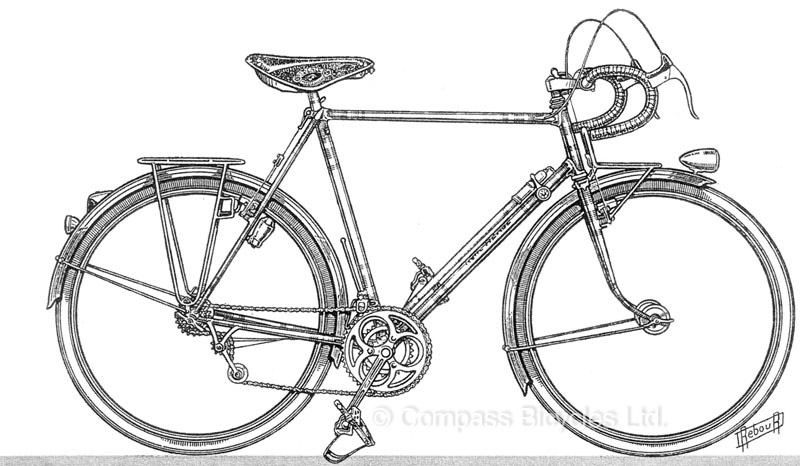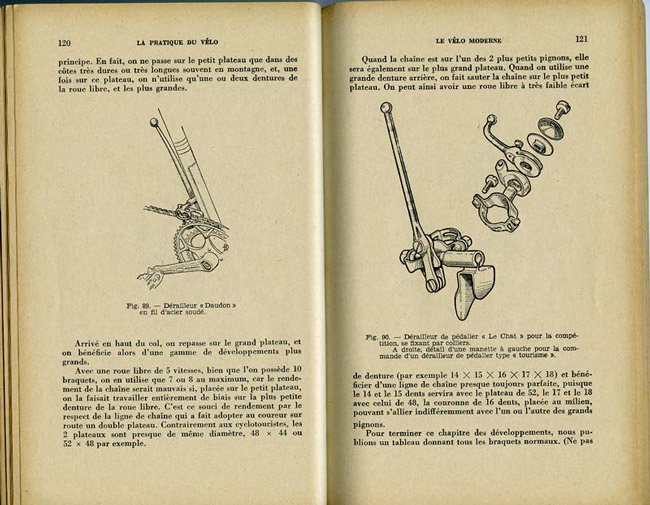Daniel Rebour

Even though Daniel Rebour retired almost 40 years ago, his drawings remain recognizable to many cyclists today. Rebour’s drawings distilled the essence of components and bicycles better than photographs ever can. He managed to make even the most mundane bicycle appealing, and his drawings greatly added to the allure of the wonderful machines made by the great constructeurs.
Rebour visited bike shows all over Europe and even in North America when he worked for the trade magazine Le Cycle. Over the years, he chronicled technological progress. Historians today turn to his articles and drawings to figure out, for example, the history of Campagnolo’s first derailleurs, the Gran Sport, through its convoluted gestation. Rebour was there, and recorded what he saw in his drawings.

Rebour was influenced by the French constructeurs’ emphasis on the “line of the bike,” and in return, his drawings influenced how the French saw bikes. Rebour did not dwell on intricate lug cutouts, but focused on the proportions and outline of the bike. His drawings look especially exceptional when they depict bicycles with good fender lines and nicely proportioned frames.

Rebour’s work reflects a true love of cycling and of bicycles. Bicycle Quarterly photographer Jean-Pierre Pradères visited Simone Rebour many years ago. He interviewed Simone and obtained access to Rebour’s archives. In Bicycle Quarterly Vol. 2, No. 4, Jean-Pierre related their fascinating story.

Daniel and Simone Rebour were active cyclotourists. For their honeymoon, the Rebours rode a René Herse tandem to a new mixed-tandem record in the 1948 Paris-Brest-Paris (above). They went touring by bike, but also entered competitions like the Poly de Chanteloup and the Brevet Randonneur des Vosges. In 1949, Simone Rebour set the women’s record for the 200 km brevet, with a time of 6:57 hours – faster than most randonneurs ride today.

Daniel Rebour also wrote an introduction to cycling (above) where he explained what to look for in a bicycle. The book was reprinted in several editions for almost 30 years. Rebour’s second love was motorcycling, and he published many articles and drawings in Moto Revue under the pseudonym “Paul Boyenval.” He also wrote an introduction to motorcycling that is similar to his book on cycling.

It is thanks to Rebour’s many drawings, often titled “Nouveautés au Salon du Cycle” (“New Products at the Paris Bike Show) that we can piece together the history of bicycle components, both from the large manufacturers and from the small constructeurs. Above is part of an article from the 1960 Salon du Cycle, which saw the introduction of the Mafac “Kathy” cantilevers and the “Tiger” centerpulls.
Imagine this larger-than-life figure, working on his detailed drawings in his country house in Normandy, and then, at the end of a full day, getting on his Herse to go for a ride… what a way of life!

The full story of Daniel Rebour, with many photos and drawings, was published in Bicycle Quarterly Vol. 2, No. 4.


